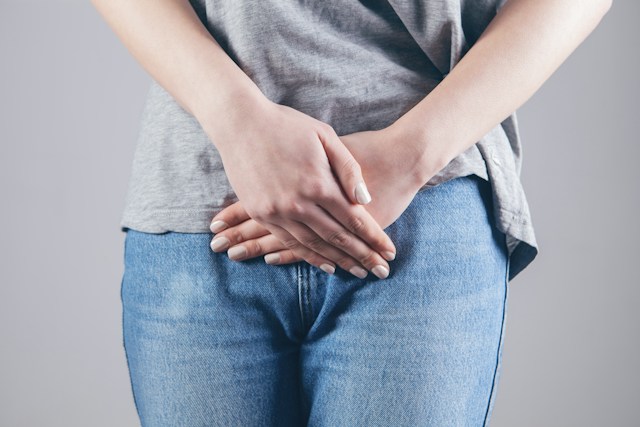Urinary incontinence is the loss of bladder control that results in the unintentional passing of urine; this condition is widespread. It is disconcerting but this condition is not really impossible to manage or even treat through certain measures and alterations in daily habits. This blog will discuss different ways in which one can help manage Urinary Incontinence and be able to bring some full understanding to the issue so that you can be able to manage it effectively.
Understanding Urinary Incontinence
Before diving into self-management strategies, it’s important to understand the different types of urinary incontinence
- Stress Incontinence: Stress Urinary Incontinence is known to happen during physical activities for example when one is coughing or sneezing or even when lifting a heavyweight.
- Urge Incontinence: A strong desire to void accompanied by the inability to prevent the passing of urine.
- Overflow Incontinence: The bladder does not get to empty completely and hence, one is likely to dribble.
- Functional Incontinence: Physical or mental handicap hinders one from visiting the bathroom in good time.
- Mixed Incontinence: Stress and urge incontinence at the same time.
Self-Management Strategies
-
Pelvic Floor Exercises
Pelvic floor exercises are also known as Kegel exercises; these help in the contraction of muscles that support the bladder and control the urge to urinate. Here’s how to do them:
- Identify the Muscles: Muscles that help in stopping the urine flow mid-way are the pelvic floor muscles.
- Exercise Routine: Squeeze these muscles as hard as possible for 5 seconds and then let the muscles go for another 5 seconds. It is recommended to do three sets of 10 repetitions a day.
- Consistency: It is important to engage in the activity daily. If you feel that you will forget, set reminders on your phone to do them daily.
-
Bladder Training
Bladder training involves increasing the time between bathroom visits to improve bladder control:
- Start a Schedule: First, go to the bathroom after the set time of every hour even if you don’t have the need to urinate.
- Gradually Increase Intervals: Gradually increase the interval in which the time between visits is increased by 15 minutes every week.
- Resist the Urge: If you have the urge to urinate before the scheduled time, it is advisable to delay it a little bit.
-
Dietary Modifications
Some forms of food and beverages are known to worsen the condition of the bladder and increase incontinence. Consider the following dietary changes:
- Avoid Irritants: Avoid or reduce caffeine, alcohol, spicy foods, and acidic fruits.
- Stay Hydrated: Ensure that you take adequate fluids for the body but avoid taking a lot of fluid, especially before going to sleep.
- High-Fiber Diet: Do not develop constipation as this will aggravate incontinence; it is advised to take a high fiber diet.
-
Maintain a Healthy Weight
Obesity can also increase the weight of the bladder and hence worsen the incontinence. Here’s how to manage your weight:
- Balanced Diet: Take a balanced diet that includes fruits, vegetables, lean meats and proteins, and whole grain products.
- Regular Exercise: Exercise frequently, this could include walking, swimming, or cycling.
- Monitor Progress: Monitor your weight and adjust it the way you deem most appropriate.

-
Fluid Management
Managing your fluid intake can help control urinary incontinence:
- Timing: Drink most of your day and reduce the intake at night.
- Types of Fluids: According to the given choices, water is the best one. Do not take beverages that are sweetened or have caffeine in them.
-
Bladder-Friendly Clothing
Wearing the right clothing can make managing incontinence easier:
- Comfortable Fit: Ensure that the outfit you wear can be easily removed especially in case of an emergency that requires you to quickly use the bathroom.
- Protective Undergarments: Some of the measures that can be considered include the use of pads or diapers for extra protection.
-
Behavioral Techniques
Behavioral techniques can help manage the symptoms of urinary incontinence:
- Timed Voiding: It is advised to create a schedule for visiting the bathroom at regular intervals to avoid any mishaps.
- Double Voiding: It is recommended that after you have passed urine, you wait for a few minutes then try to pass urine again in order to empty the bladder.
-
Devices and Products.
Several products can assist in managing urinary incontinence:
- Incontinence Pads: Pads or underwear can help in achieving comfort and to avoid leakage.
- Pessaries: For women, a pessary which is a device inserted into the vagina can also assist in bladder support.
- Portable Urinals: Appreciated by those who have problems with getting to the bathroom in time.
Knowing When to Go to the Doctor
While self-management techniques can be effective, it’s important to know when to seek professional help:While self-management techniques can be effective, it’s important to know when to seek professional help:
- Persistent Symptoms: In case the symptoms do not change or even get worse even with the management that has been done.
- Severe Incontinence: If incontinence is very bad and is interfering with your daily life.
- Underlying Health Conditions: If there is a possibility that there is another medical condition that is causing the incontinence.
Urinary incontinence is not something that can be cured overnight and it often takes an effort to find the right tactics to help you deal with it. Through methods such as pelvic floor muscles, bladder training, diet changes, and other self-care measures, it is possible to enhance the control of the bladder and gain back confidence. Do not despair, because millions of people control the problem and have normal, happy lives with urinary incontinence. In case self-management techniques are not effective, it is advised to consult a physician to get more information on the possible treatments.




